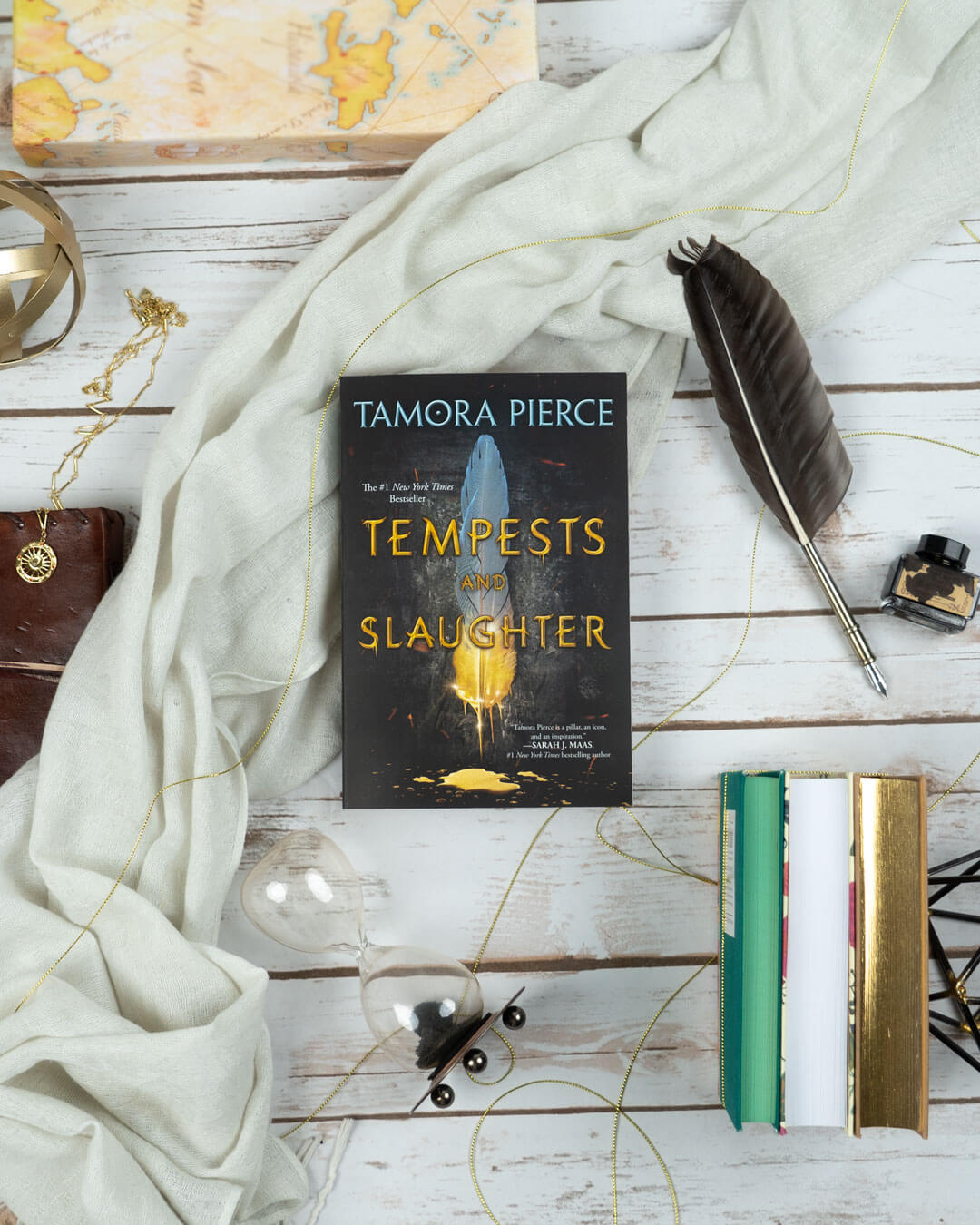Beloved fantasy author Tamora Pierce is a legend and she’s sharing her writing process with the Underlined community! Check out how Tamora Pierce approaches a day of writing. . .

I try to get some work done between ten and noon, though that’s not always successful—there’s feeding indoor and outdoor critters, breakfast, appointments, conferring with my assistant till one or two, that sort of thing. There’s also correspondence. Mostly I don’t really sit down to write until around two or three in the afternoon, every day of the week except Sunday (social day) and maybe Saturday if I’m lazy.
I have to cuddle Autumn, my fuzzy tortoiseshell cat (all our cats are rescues of one kind or another) until she gets bored or her kneading starts to draw blood. That’s a given.
My desk backs up between two bulletin boards, where I keep the photos of people and places I base my book’s characters and places on, plus a few mementos. I’m not really good at vivid descriptions unless I have pictures—I can’t remember images unless I’ve been familiar with them for years. This is also why I base things on real people and places, so I have a place to start. I have five sets of bookshelves with my reference texts on them—medieval, Renaissance, and classical history, fashion, weapons, and customs, straight history and maps of as many countries around the world as I think I might need, including kids’ reference (more pictures), cookbooks (a good cookbook will tell you more about its culture than just what to put in soup), and books that cover the world in general (how people eat, how people work), as well as my scrapbooks. Behind me are my language books, name books, stone and gem books, plant books, occult books, travel guides, and animal books, as well as my drawers of pictures of people from all over the world, separated by age, sex, and color, to use for characters. (Another cabinet of drawers, under my good map of Tortall, holds personal papers and my three drawers of maps from every place I can get them.) Oh, and in front of different shelves I have either clusters of miniature animals: cats, elephants, marsupials, bunnies, turtles; assorted jars of stones; or varied kinds of rough opals. Believe it or not, all of these things are for research.
On the desk itself is my printer, my stand for holding paper when I want to type from it, my music apparatus, my big computer screen, and all kinds of doodads and papers. The work in progress is in a covered plastic file box, next to my keyboard, on top of a stand, and a few other places, mingled with stuffies, antacids, stones, figurines, wrist braces, my bottle of water, a carousel of writing tools, several notepads (yellow steno with the red line down the middle). There’s other stuff—I haven’t numbered the stuffies (I have an ugly habit of “liberating” any stuffie that looks unhappy when I see it as I travel, which is how I ended up with eight Cracker Barrel opossums before my husband asked and said they would never throw the last one out because they’re CB’s signature animal, so they always make more), or the plastic boxes with manuscript drafts and mementos.
I sit, play a game on my iPod or iPad, answer mail, then get to work. I do a minimum of two pages, breaking only to look things up or check something earlier, then get up and fool around for a short while. Back to work for at least two, maybe more pages. I used to do seven pages a day. I had a bad several years, and now I’m working my way back. It’s different with a second draft. I regulate myself less because I’m more caught up, but if I catch myself goofing off, I go back on the clock. Also, I’m supposed to have five pages a day when I’m working with my writing partner, Bruce Coville, which keeps me on track.

